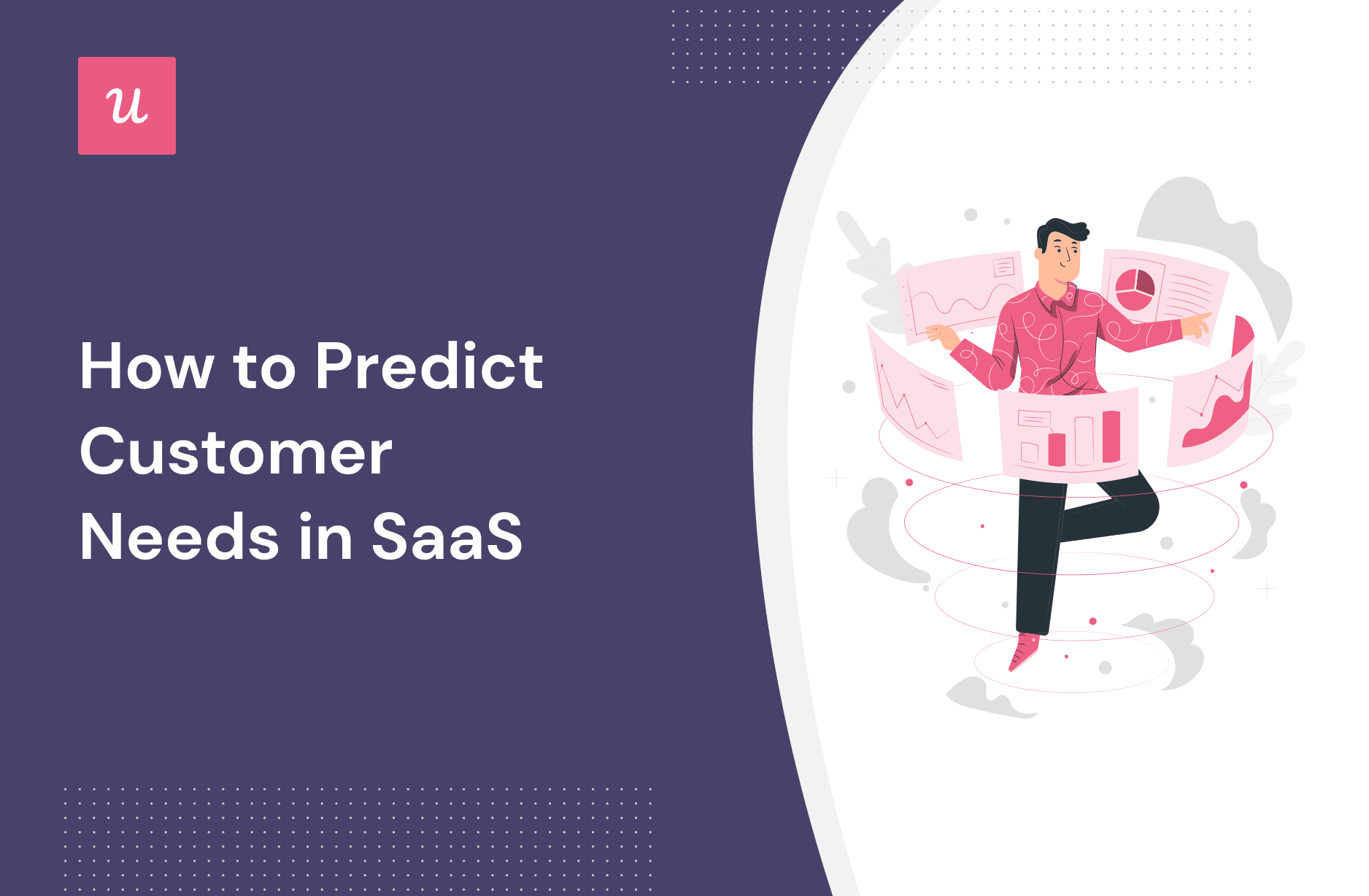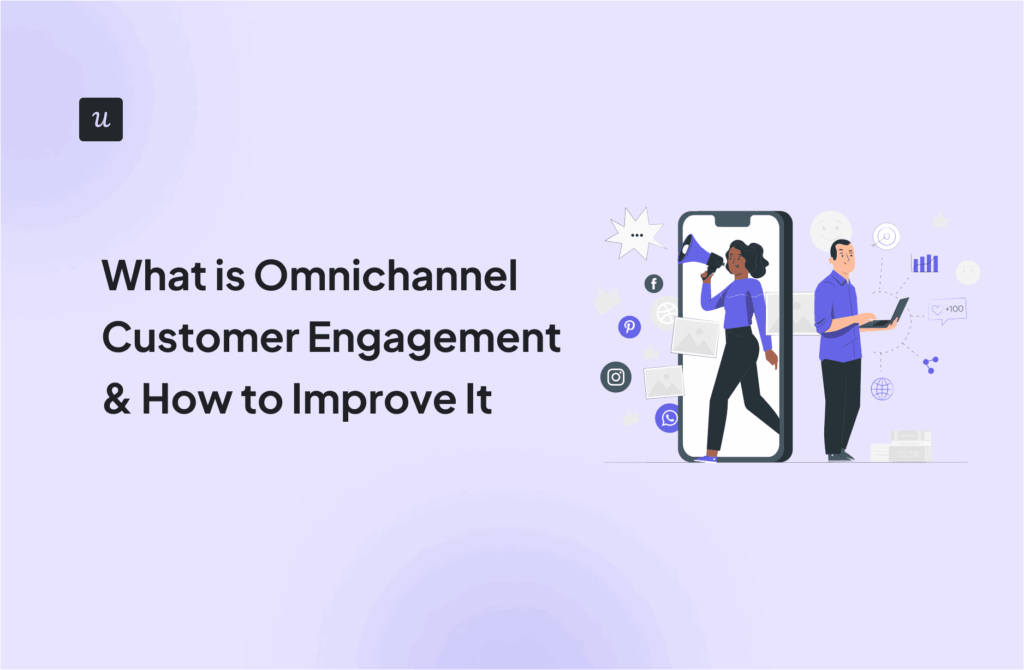
The SaaS market is complex and dynamic: product managers who can successfully predict customer needs are a valuable commodity.
In this article, we’re going to explore what customer needs are, how you can analyze customer behavior to extrapolate them, and ultimately how you can use your findings to predict the future.
Let’s make a start!
Get The Insights!
The fastest way to learn about Product Growth, Management & Trends.
What are customer needs?
Customer needs are the wants and desires that motivate a customer to use a specific product or service.
These are typically either functional (i.e. can a user do what they need to) or emotional (i.e. how do they feel when going through various customer journeys in your service).
It is important for businesses to understand their customers’ needs properly. Without that understanding, it’s nearly impossible to provide products and services that meet those needs.
Predict customer needs without AI tools
So, you want to get started predicting customer needs.
For the majority of product managers, you’ll be exploring how to do this manually. While that offers a constraint in terms of scalability there are still valuable insights you can gather – particularly for smaller data sets or segments.
Let’s unpack some of the methods at your disposal.
Analyzing NPS promoter responses
NPS is an incredibly valuable metric to track and analyze. It’s the best proxy you have at your disposal for understanding what’s driving customer loyalty. Firstly, you’ll want to collect data directly from your customer base – you can use a survey for this.
You can then compare existing customers’ behaviors with how they’ve responded, and draw conclusions about what they’re trying to get from your product.

Analyze NPS detractor’s responses
Don’t just focus on positive responses.
You can understand customer behavior even better by looking at negative feedback. You grow and learn through figuring out areas of friction: what are the main customer concerns, the most frustrating customer journeys, or annoying business processes?
Once you’ve worked these out, you can reverse engineer customer needs fairly easily.

Analyze CSAT surveys
If you want to understand the customer experience as a whole, you’ll want to analyze the results of CSAT surveys.
The responses will give you an idea of their happiness levels, and how the customer journeys you’ve designed are playing out. That puts you in a stronger position to boost customer engagement and improve customer satisfaction.
For large amounts of data, AI and machine learning can help you predict future behavior based on current data: more on that later.
Track feature usage to understand needs across the customer journey
Data is power.
Customer journey analytics will shine a light on a huge variety of useful information: you can look at feature usage, understand where a user is in a journey, and anticipate what will bring value to them next based on the behavior of your ‘power users’.
You can track individual feature uptake and overall product usage. Analytics can help inform where the main pain points are, and that makes it simpler to take the strategic decisions necessary to help you achieve your business goals.

Use feature surveys to understand needs based on customer satisfaction
Feature surveys are another valuable data source. As you evolve customer experiences over time, you’ll want to frequently check in with how a new feature is landing with your target audience.
You can start with a simple, open-ended question:
Did you achieve your goal?
Leaving it as broad as possible means any customer concerns will float to the surface. Complaining is natural human behavior! You can use these to identify needs.

Monitor review platforms for additional customer insights
You’ll get accurate information about how your users really feel from review sites.
Look for keywords, trends, and areas that come up time and again – you’ll be able to find clues about what your users are trying to achieve (and how well your product helps them do that).
While it’s not exactly real-time data, it’s definitely worth monitoring and understanding alongside other experience data.

Predict customer needs using predictive analytics, AI & Machine Learning
AI is not just the near future: it’s here now.
While manual forms of analysis are fantastic, by leveraging technology you can unlock even deeper insights into customer needs – and do it at pace.
Predictive analysis, deep learning, and artificial intelligence can help identify at-risk customers, improve customer satisfaction, and provide better services.
Let’s explore how!
Customer behavior prediction using AI tools
Feed an AI model with enough customer data, and you’ll be able to generate an accurate prediction of potential churn.
Essentially what these do is look at thousands of customer journeys over time, and figure out drop-off points – in a nutshell, the points in the journey you’re failing to meet their fundamental needs or expectations.
Having a view of those users who might churn means you can intervene, offer solutions, and hopefully influence the business decisions your user base makes.
Generate valuable insights from customer feedback responses
Sentiment analysis is another powerful tool in your arsenal.
You can quickly and easily identify clear emotions – correlated with positive or negative keywords – and then focus on the aspects that are driving positive engagement.

Understanding how users are feeling will give you a rounded view of the overall customer experience: you can easily see how a change is impacting sentiment over time.
Predict customer needs by analyzing paying customers’ behavior
Another way to predict customer needs is by looking at distinct customer segments, examining the customer journey in more detail, and predicting the user groups who have needs that closely align with what you’re offering.
For example, you might look at customer segments with the following attributes:
- Paying customers
- Loyal customers
- Happy
- Active
- Engaged
Based on this data, tools can predict what the best type of customer is for you and their needs.

Conclusion
That wraps up our adventure into the world of customer needs.
You’re now well-equipped to analyze every single customer journey, soak up the wisdom from a range of data sources, and utilize the latest technology to make the very best product decisions.
Want to get started with predicting customer needs? Get a Userpilot Demo and see how you can take advantage of a powerful onboarding and analytics platform today.






